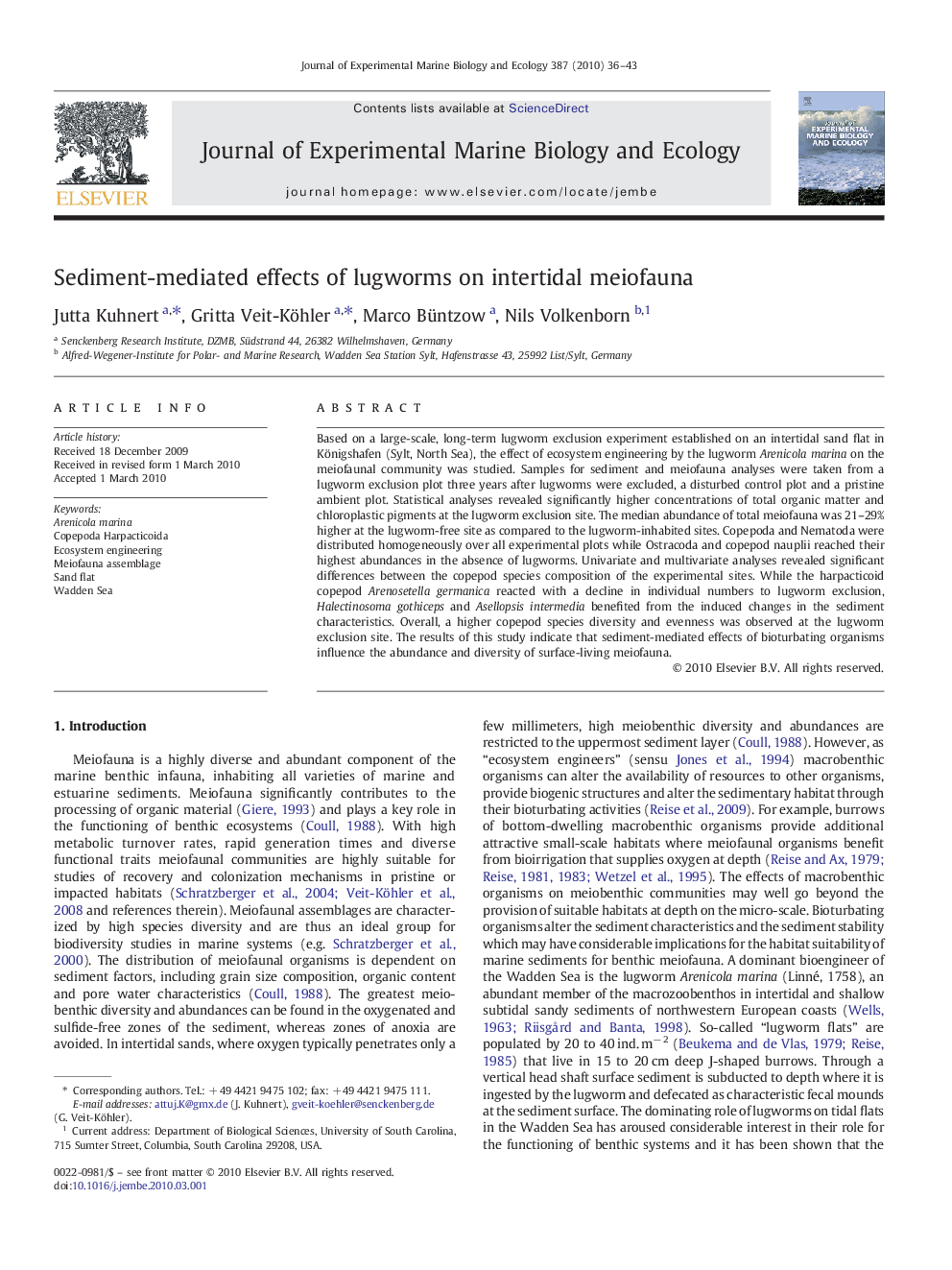| Article ID | Journal | Published Year | Pages | File Type |
|---|---|---|---|---|
| 4396764 | Journal of Experimental Marine Biology and Ecology | 2010 | 8 Pages |
Based on a large-scale, long-term lugworm exclusion experiment established on an intertidal sand flat in Königshafen (Sylt, North Sea), the effect of ecosystem engineering by the lugworm Arenicola marina on the meiofaunal community was studied. Samples for sediment and meiofauna analyses were taken from a lugworm exclusion plot three years after lugworms were excluded, a disturbed control plot and a pristine ambient plot. Statistical analyses revealed significantly higher concentrations of total organic matter and chloroplastic pigments at the lugworm exclusion site. The median abundance of total meiofauna was 21–29% higher at the lugworm-free site as compared to the lugworm-inhabited sites. Copepoda and Nematoda were distributed homogeneously over all experimental plots while Ostracoda and copepod nauplii reached their highest abundances in the absence of lugworms. Univariate and multivariate analyses revealed significant differences between the copepod species composition of the experimental sites. While the harpacticoid copepod Arenosetella germanica reacted with a decline in individual numbers to lugworm exclusion, Halectinosoma gothiceps and Asellopsis intermedia benefited from the induced changes in the sediment characteristics. Overall, a higher copepod species diversity and evenness was observed at the lugworm exclusion site. The results of this study indicate that sediment-mediated effects of bioturbating organisms influence the abundance and diversity of surface-living meiofauna.
